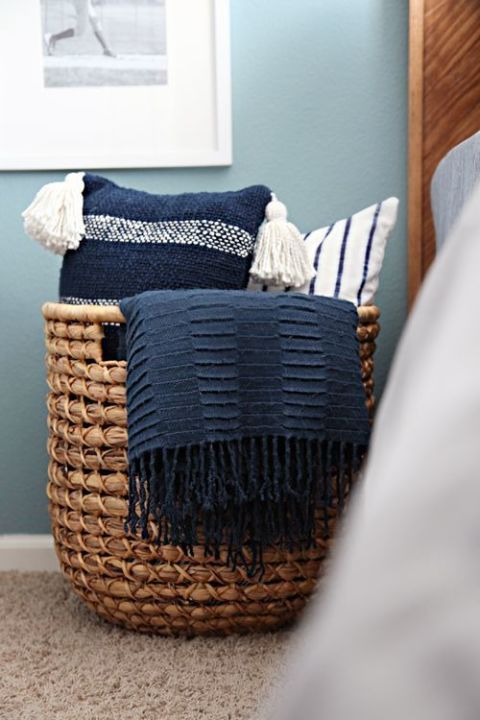The Christmas
season is a highly celebrated time of the year globally. The Christmas
tradition began as a religious celebration where Christians celebrated the birth
of Jesus. This is highly significant due to its meaning and representation to the Christian
faith. However, the Christmas season celebrations are experienced by everybody
in the world, both Christians and non- Christians. During this season, people
go all out in decorating their homes, malls put up Christmas trees and lights
and many businesses include these decorations as part of their holiday celebrations. This
tradition has been passed on for many years. Decorating the
home for Christmas is very exciting, both for singles and for familys with kids. The choice of Christmas decorations should be able to fit into
the current style of the home.
What type of decoration styles are there?
There are many types of decorations that can go with different styles of the home. These decorations generally fit into any style, however for homes with very vibrant colour schemes, all white or rustic decorations always look better.
a) All white décor
All white décor is beautiful and elegant. This is the best décor to put up if you don’t like too much colour. This type of décor is simple, neutral and can be easily achieved. White décor makes a home bright and airy. White as a colour is a symbol of peace and tranquility. White gloves, cotton balls an paper cut snowflakes can be used to decorate the Christmas tree or the fireplace mantle. Gold or silver accents can be added to bring a shimmer to the look. This is the look that Melania Trump has chosen for the 2017 White House chrismas scheme.
b) Red and green Christmas décor
The red colour in Christmas décor symbolizes the blood of Jesus which was shed during his crucifixion.
The green colour symbolizes eternal life and is picked up from the evergreen tree which does not lose its leaves over winter. This tree has naturally been adopted as the Christmas tree all round the world. Red and green décor bring colour to the celebrations and generally “pop” in neutral scheme homes.
c) Rustic décor
Lovers of the Craftsman and Farmhouse design styles can rest easy as rustic décor perfectly fits in their interior design style. The rustic décor incorporates natural textures in décor pieces with no pop of colour. Natural wood tones can also be incorporated in the Christmas décor. Brown book cover paper and sisal fabric can be cleverly used to wrap gifts, make Christmas tree ornaments and also be used as dining table placemats and napkin holders.
d) Nature inspired décor
Use of natural plants as Christmas décor is highly appreciated by environmentalist. Christmas season can have a huge environmental impact due to the greenhouse gases emitted from production of Christmas decorations. Use of natural decorations such as branches , twigs and natural plants can have a reduced impact environmentally as these décor pieces are used over a short period of time. Disposal is made easy as natural plants naturally and easuly decompose.
How about becoming environmental friendly this Christmas?
Re-cycling is a good way to save money and reduce waste this Christmas season. Old newspapers, cardboard boxes and bottletops are waste materials that can be used to make christmas decorations. Watch video below for more inspiration.
What type of decoration styles are there?
There are many types of decorations that can go with different styles of the home. These decorations generally fit into any style, however for homes with very vibrant colour schemes, all white or rustic decorations always look better.
a) All white décor
All white décor is beautiful and elegant. This is the best décor to put up if you don’t like too much colour. This type of décor is simple, neutral and can be easily achieved. White décor makes a home bright and airy. White as a colour is a symbol of peace and tranquility. White gloves, cotton balls an paper cut snowflakes can be used to decorate the Christmas tree or the fireplace mantle. Gold or silver accents can be added to bring a shimmer to the look. This is the look that Melania Trump has chosen for the 2017 White House chrismas scheme.
b) Red and green Christmas décor
The red colour in Christmas décor symbolizes the blood of Jesus which was shed during his crucifixion.
The green colour symbolizes eternal life and is picked up from the evergreen tree which does not lose its leaves over winter. This tree has naturally been adopted as the Christmas tree all round the world. Red and green décor bring colour to the celebrations and generally “pop” in neutral scheme homes.
c) Rustic décor
Lovers of the Craftsman and Farmhouse design styles can rest easy as rustic décor perfectly fits in their interior design style. The rustic décor incorporates natural textures in décor pieces with no pop of colour. Natural wood tones can also be incorporated in the Christmas décor. Brown book cover paper and sisal fabric can be cleverly used to wrap gifts, make Christmas tree ornaments and also be used as dining table placemats and napkin holders.
d) Nature inspired décor
Use of natural plants as Christmas décor is highly appreciated by environmentalist. Christmas season can have a huge environmental impact due to the greenhouse gases emitted from production of Christmas decorations. Use of natural decorations such as branches , twigs and natural plants can have a reduced impact environmentally as these décor pieces are used over a short period of time. Disposal is made easy as natural plants naturally and easuly decompose.
How about becoming environmental friendly this Christmas?
Re-cycling is a good way to save money and reduce waste this Christmas season. Old newspapers, cardboard boxes and bottletops are waste materials that can be used to make christmas decorations. Watch video below for more inspiration.
















































